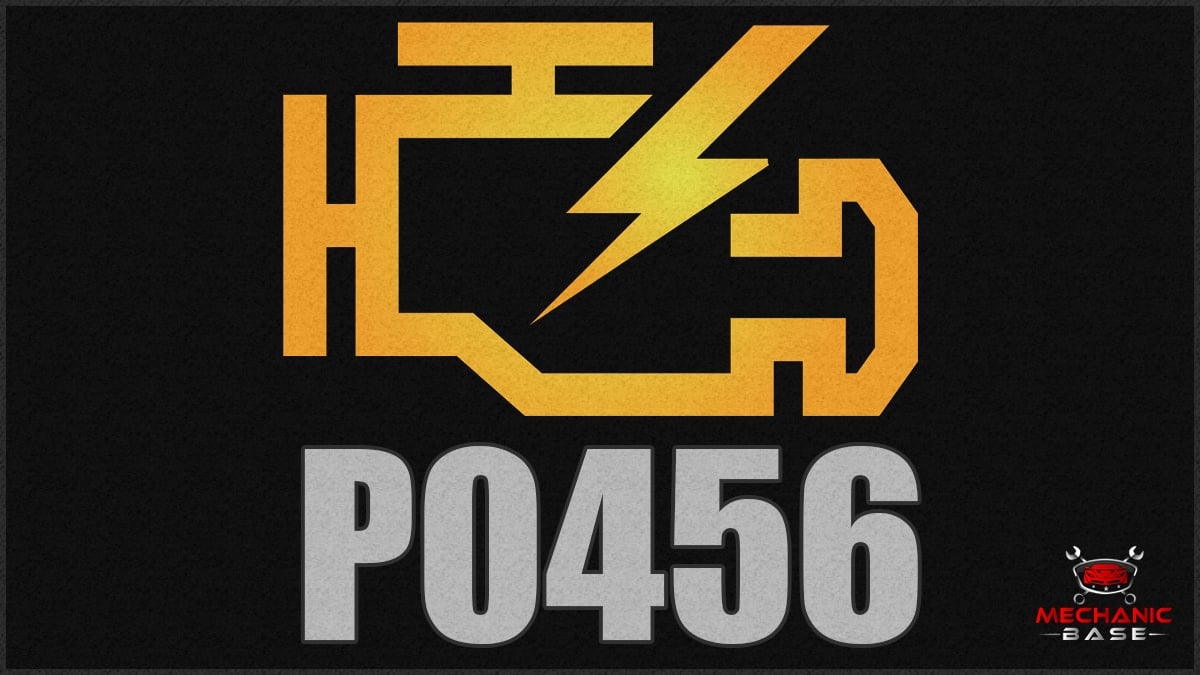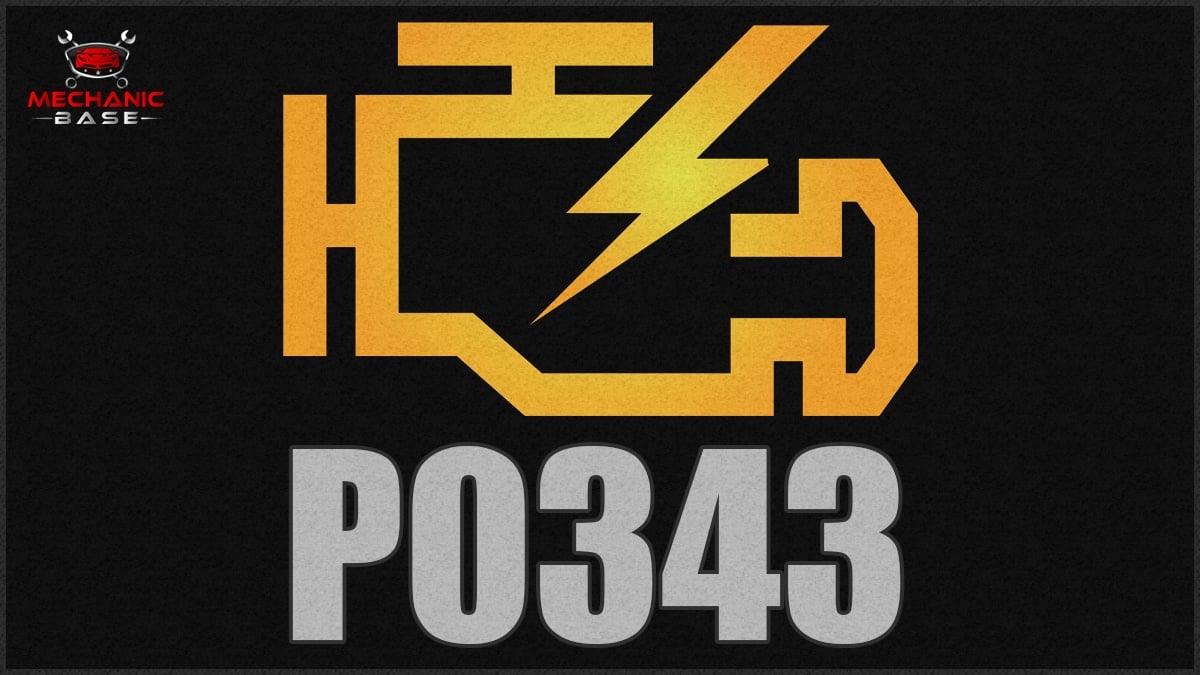There are many different trouble codes that can be set in the system when there’s an issue with an oxygen sensor. One such example is the P0133 code. What does it mean and how does it differ from others you may see?
In this article, we cover the P0133 trouble code meaning, its symptoms and its top causes. We also explain how to diagnose the P0133 DTC and show you the most common repairs with their appropriate costs. At the end of this guide, you’ll find answers to questions that have been bothering you.
Code P0133 Definition
P0133 – Oxygen Sensor Circuit Slow Response (Bank1, Sensor1)
What Does the P0133 Code Mean?
P0133 is a generic powertrain DTC indicating an issue with the air content being read by the oxygen sensor (Bank 1, Sensor 1). This sensor tells the Engine Control Module (ECM) how much oxygen is registering in the air-fuel mixture. If the voltage output doesn’t read normal, the code sets.
When everything is running as it should, the voltage changes as you push down on the accelerator pedal. If it’s not, there could be a problem with the O2 sensor or a malfunction leading to a lack of air in the mixture.

Sensor 1 is considered the front O2 sensor. It’s located on Bank 1, which is the cylinder #1 side of the engine.
READ MORE: Bank 1 vs Bank 2 – Sensor 1 & 2 (Locate O2 Sensors Fast & Easy)
What Are The Symptoms of P0133?
In some cases, it would be normal to only see the Check Engine Light and no other strange symptoms with the P0133 DTC. However, that’s not always the case. Here are the top P0133 symptoms to watch for.
- Check Engine Light
- Unusual exhaust smoke
- Rough engine performance
- Reduced fuel economy
- Erratic idle
- Misfiring or stalling engine
What Are The Causes of P0133?
It’s normal to assume that the O2 sensor is bad because that is usually the case, but it’s not the only problem to consider. Here are some of the most common P0133 DTC causes.
- Bad O2 sensor
- Defective wiring or connector
- Malfunctioning mass airflow (MAF) sensor
- Exhaust leak
- Vacuum leak
- Bad ECM – rare
How Serious is the P0133 Code?
Medium – You can probably continue driving for a short time with the P0133 code and not notice any problems. In some cases, there may not even be symptoms that there’s anything wrong.
Yet, we don’t recommend ignoring the fault code. Instead, you want to have it repaired, especially if there are other symptoms. Continuing to drive with the air-fuel mixture off-balance can create issues with more costly parts, such as the catalytic converter. It also means that more toxins may be entering the atmosphere and the Check Engine Light won’t go off until it’s resolved.
How Do I Fix the P0133 Code?
The only way to figure out an appropriate fix for the P0133 trouble code is to perform diagnostics. We show you how to do that in a minute. After that, you may find that one of these repairs is the best option.
- Clean/replace O2 sensor
- Repair/replace damaged wiring or connector
- Replace mass air flow (MAF) sensor
- Repair exhaust leak
- Repair vacuum leak
- Update/replace ECM
Common P0133 Diagnosis Mistakes
It’s easy to jump right in and replace the oxygen sensor when you see the P0133 trouble code. The O2 sensor is normally to blame with this code, but it’s not the only possibility. If you replace parts that are good, you only spend more money than necessary and you will have wasted precious time.
For this reason, we always recommend inspecting all of the parts to see what’s wrong. If you can clean off the sensor or remove some corrosion from the wiring, you may not need to buy any parts at all.
How to Diagnose the P0133 Trouble Code?
The good news about the P0133 DTC is that you don’t need to be a mechanic as we are to determine what’s wrong. While we may have specialized tools and many years of experience, neither of these is needed to fix this fault. Instead, you want to follow these general steps.
- Grab a copy of your factory service manual. It outlines the procedures for troubleshooting that are unique to your make and model.
- Use an advanced scanner to see what other codes are present. If there are codes besides the P0133, you want to use our online trouble code library to see what they mean. In some cases, fixing these first helps to resolve the P0133 code too.
- Consider using the freeze frame data on your scanner. It can help you see what’s happening live and with various inputs thrown into the mix.
- Visually inspect the oxygen sensor. It could need a cleaning or there may be damage to the wiring. These are simple solutions that help you avoid a replacement.
- Visually inspect the mass air flow sensor. Replace any faulty wiring or damaged connectors.
- Follow the guidelines in your service manual to check for vacuum or exhaust leaks.
- If nothing else seems wrong, you want to replace the oxygen sensor.
- Reset the codes and test drive the vehicle to ensure the Check Engine Light remains off.
There’s no shame in reaching out for help from a professional if you aren’t sure what to do next. You aren’t expected to know everything about cars overnight. If you don’t have a current relationship with a mechanic, talk to your friends and family members for a recommendation.
How Much Does It Cost To Fix Code P0133?
You’ve gone through the diagnostic procedures and figured out what’s wrong. Now all you want to know is how much it is going to cost you. Here are a few estimates to consider, assuming you will be paying for both parts and labor. However, these costs vary by the make/model of the vehicle and the local mechanic labor rates.
- Clean/replace O2 sensor: $75 to $450
- Repair/replace damaged wiring or connector: $50 to $550
- Replace mass air flow (MAF) sensor: $75 to $350
- Repair exhaust leak: $50 to $350
- Repair vacuum leak: $75 to $375
- Update/replace ECM: $250 to $2,500
The best thing that could happen is that you could repair the problem on your own. In this case, you would only have to pay for the replacement parts, which would dramatically lower your cost.
A Mechanic’s Tips About The P0133 Code
With the P0133 code, you know you are dealing with a fault related to the oxygen sensor on bank 1. It’s related to sensor 1. However, this same fault can occur with the other oxygen sensors. The only way to know the difference is because the code won’t be the same. Here are the two other codes that would occur on Bank 1.
- P0139 – O2 Sensor Circuit Slow Response (Bank 1 Sensor 2)
- P0145 – O2 Sensor Circuit Slow Response (Bank 1 Sensor 3)
What is the code P0133 Bank 1 sensor 1?
When the P0133 code is set, it means that the O2 sensor isn’t altering the voltage output as it should when the air-fuel ratio changes. For that reason, it’s categorized as having a slower response than normal. This code indicates trouble with oxygen sensor #1 on bank #1, which is on the same side of the engine as cylinder #1.
Is code P0133 serious?
It may not be an emergency to deal with this code immediately, but you won’t want to put it off too long. Continuing to operate the vehicle with a malfunctioning oxygen sensor can lead to further damage, especially to expensive parts, such as the catalytic converter. It’s best to take the P0133 code seriously.
Can I drive with a P0133 code?
If the vehicle is continuing to act normally, you won’t have any problems driving it with the P0133 code set in the system. However, you don’t want to ignore it or you may end up with bigger issues, such as having to replace the catalytic converter. You also want the Check Engine Light to go off, which only happens after a repair.
Is P0133 upstream or downstream?
The P0133 trouble code stands for Oxygen Sensor Circuit Slow Response (Bank 1, Sensor 1). This is an upstream oxygen sensor responsible for measuring O2 content in the exhaust and sending the information to the computer. It’s the closest one to the engine, while sensor 2 is downstream.
While there’s no reason to pull over after finding out that the P0133 code is set, you do want to resolve it as soon as you can. If there’s a problem beyond a faulty oxygen sensor, the air-fuel ratio of the vehicle may not be correct. In this case, you may also see other trouble codes that indicate an issue. You may also notice some performance issues.
In any case, it’s best to have the Check Engine Light turned off, which can only happen when you resolve the fault. Otherwise, you won’t know if something else malfunctions that is more serious.
Categories: OBD Codes














